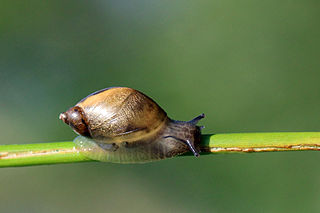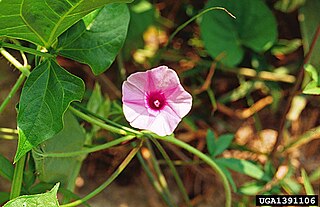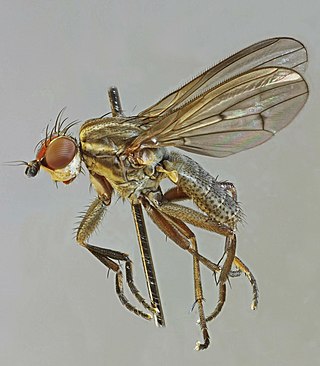Neacomys tenuipes, also known as the narrow-footed neacomys or narrow-footed bristly mouse, is found along the northern Andes from northwestern Venezuela through Colombia into Ecuador, in rainforest at elevations from 400 to 1750 m. Populations of small Neacomys in the lowland Amazon basin, previously assigned to this species, are now recognized as belonging to separate species.
The genus Neacomys, also known as bristly mice because of their spiny fur, includes several species of rodents in the tribe Oryzomyini of family Cricetidae. It is most closely related to Oligoryzomys, Oreoryzomys, and Microryzomys. Neacomys species are mainly found in the Amazon basin, but N. pictus occurs in Panama and N. tenuipes in montane Colombia.
Sepia tenuipes is a species of cuttlefish native to the western Pacific Ocean. Its natural range covers the waters off eastern Honshū and the western Japan Sea to the south of Kyūshū, the East China Sea, and Korea. S. tenuipes lives at depths of 100 to 250 m.

Succinea putris is a species of small air-breathing land snail in the family Succineidae, the amber snails.

Symphyotrichum lateriflorum is a species of flowering plant in the aster family (Asteraceae). Commonly known as calico aster, starved aster, and white woodland aster, it is native to eastern and central North America. It is a perennial and herbaceous plant that may reach heights up to 120 centimeters and widths up to 30 centimeters.

Ipomoea heptaphylla, sometimes known as Wright's morning glory in the United States, is a species of morning glory. It is incorrectly classified as I. wrightii in American publications, but is incorrectly known as I. tenuipes in Africa and India. It is an annual or short-lived perennial vine which climbs using twining stems, and has pink or purple flowers. The leaf shape is somewhat variable, with individuals possessing compound leaves palmately divided into five leaflets, and lanceolate-leaved individuals occurring in neighbouring populations. The name heptaphylla actually means 'seven-leaved'. This plant has a very extensive distribution, from Texas and adjacent states in the southeastern USA to Misiones in northern Argentina, the Greater Antilles of the Caribbean, India, Sri Lanka and East and Southern Africa. Despite its wide distribution it is uncommon throughout its range. The rediscovery of the presence of the species in India after an absence of over half a century was published in 2014. The species appears to favour dry subtropical to tropical habitats.

Atractocarpus fitzalanii, commonly known as the brown gardenia or yellow mangosteen, is a species of plant in the coffee and madder family Rubiaceae. It is found in coastal parts of tropical Queensland, Australia. The beautifully scented flowers and glossy foliage has seen this plant enter cultivation in gardens of eastern Australia.

The Ropalomeridae are a family of acalyptrate flies.
Hexamunida tenuipes is a species of squat lobster in the family Munididae. It is found off of Japan.

Pherbellia cinerella is a species of fly in the family Sciomyzidae. It is found in the Palearctic. P. cinerella is a dark and very characteristic Pherbellia and easy to recognise in the field by its long mid-frontal stripe and darkened anterior wing margin. The larva is predatory on a variety of terrestrial and aquatic snails including Helicidae, Galba truncatula, Helix, Helicella, Succinea and Lymnaea.There is little or no host preference. It is found in a wide range of habitats but it is most often found in warm and dry habitats such as coastal dunes and calcareous grassland where it can reach high numbers. It is also encountered in moist vegetation though in lesser numbers. It is a potential biological control agent.

Pherbellia schoenherri is a species of fly in the family Sciomyzidae. It is found in the Palearctic .4-5 mm. long. In schoenherri the grey ocellar plate is extended in a narrow triangle almost to the antenna base. The prescutellar acrostichal bristles are reduced or absent.The costal vein of the patterned wings are equipped with a series of protruding spinules distinct from the bristles. The females lay eggs on the shells of Succineidae including Succinea putris. The resultant larvae consume the animal and pupate within the shell. P. schoenherri is a very common and widespread species with a very long flight period. It flies mainly from April to October, but in most European countries, it occurs all year round and in a very wide variety of both dry and moist habitats.

Pherbellia ventralis is a species of fly in the family Sciomyzidae. It is found in the Palearctic. Pherbellia ventralis is a small sciomyzid. The body is dark grey blue to blue grey contrasting with the yellowish brown abdomen.The mid-frontal stripe is short. The larvae feed on aquatic snails including Stagnicola palustris.

Apachekolos tenuipes is a species of robber flies in the family Asilidae.
Auleutes tenuipes is a species of minute seed weevil in the family Curculionidae. It is found in North America.

Therion is a genus of ichneumon wasps in the family Ichneumonidae. There are at least 20 described species in Therion.
Euphrytus is a genus of leaf beetles in the subfamily Eumolpinae. There are 29 described species in Euphrytus from Central and North America, three of which are found north of Mexico.
Dolichopus tenuipes is a species of long-legged fly in the family Dolichopodidae.
Clinohelea is a genus of biting midges in the family Ceratopogonidae. There are at least 40 described species in Clinohelea.
Pherbellia seticoxa is a species of marsh fly.
Pherbellia albovaria is a species of marsh fly.









